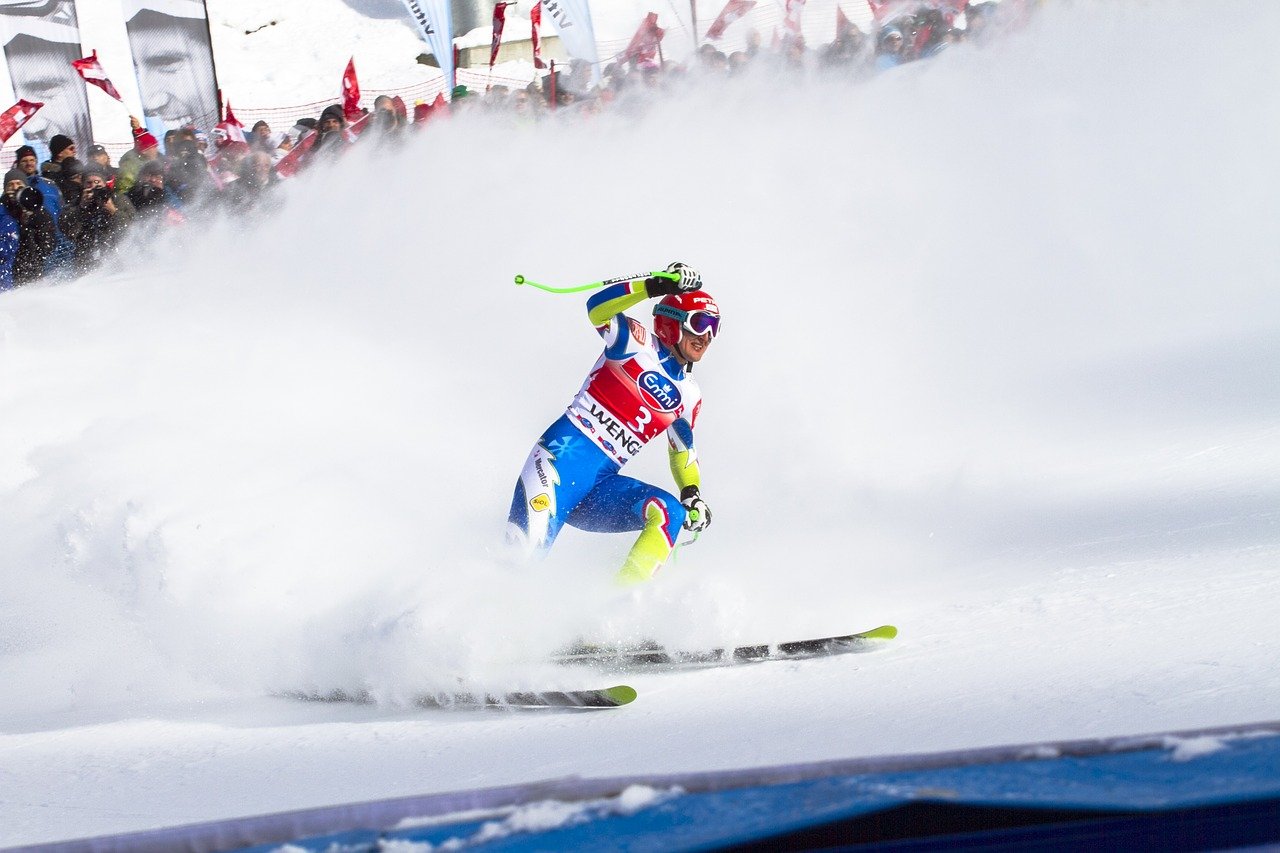The cost of alpine ski racing has a topic of great concern and much discussion in the ski racing community in recent years. I’m appreciative of Ski Racing Media for encouraging an open dialogue on this issue and inviting me to share my views on this subject.
As a member of the ski racing community who has worn many hats over the years, including former racer and ski-academy graduate, mental-health professional, and parent of two ski racers, I have experienced firsthand and from many perspectives the financial burden that our sport presents to those who wish to participate. In these roles, I believe that the COVID-19 pandemic has forced the thought leaders in ski racing to engage in a serious reckoning of our sport. As part of this deep exploration, we have been given an opportunity to challenge the status quo, identify pain points, think “outside of the box,” and institute innovative changes to the culture, structure, and pathways that will hopefully propel our sport forward in a positive and healthy direction.
This conversation is focused on two realities (both of which I embrace) and one belief (that I am uncertain of) that are hurting the growth and future sustainability of ski racing. The first reality is that the high cost of ski racing is limiting entry for many who might otherwise want to ski race. The second reality is that these costs are also forcing many young people who entered the ski-racing pipeline at an early age to leave our sport (usually after U16) because the costs of FIS racing have become prohibitive for many families. The belief that has been metastasizing in the last decade is that ski racing has become a financial race to the bottom in which family affluence is perceived to be a defining factor in whether young ski racers “make it.”
In this article, I will explore the role of money in both participation and the pursuit of success in ski racing. Additionally, I will provide a perspective that may be inconsistent with the conventional wisdom around this topic and perhaps reduce some of the concern that has raised red flags about the future viability of ski racing among those who care passionately for it.
Participation
There are several perceived and real advantages to increasing participation in ski racing in the U.S. First, more ski racers means that more young people can enjoy and benefit from all that our sport has to offer in terms of physical health, psychological wellbeing, and life lessons that will serve them well in other aspects of their lives well into adulthood. Second, more ski racers means more money flowing into our sport which strengthens and stabilizes our sport at every level.
 From a competitive perspective, the widely accepted belief is that, by broadening the base of the pyramid, we will be able to accomplish two essential goals. First, by getting more young athletes in our development system, we increase our chances of finding “once in a generation” athletes (think Bode, Lindsay, Ted, and Mikaela) who bring star power and attention to our sport. Second, creating a deeper pool of talent will help the U.S. to compete for the Nations Cup, the agreed-upon standard of the quality and depth of a national team.
From a competitive perspective, the widely accepted belief is that, by broadening the base of the pyramid, we will be able to accomplish two essential goals. First, by getting more young athletes in our development system, we increase our chances of finding “once in a generation” athletes (think Bode, Lindsay, Ted, and Mikaela) who bring star power and attention to our sport. Second, creating a deeper pool of talent will help the U.S. to compete for the Nations Cup, the agreed-upon standard of the quality and depth of a national team.
Though countries with large populations (e.g., America, China) have come to dominate some sports (e.g., track & field, baseball, swimming, basketball, diving), that has not been the case with ski racing. To the contrary, countries with small populations (e.g., Austria, Norway, Switzerland, Germany, Italy) have long ruled our sport despite our best efforts. I would suggest that this small-country pre-eminence cannot be attributed to a large base of athletes or the amount of money in ski racing. Rather, I believe it is due to the proximity of most of the population to mountains and ski racing’s high placement in the popularity of sports in these alpine countries (ski racing ranks near the top in these countries’ cultural esteem). In other words, in these small countries, many of their young athletes dream of becoming ski racers and also have ready access to skiing.
Over the years, most U.S. Ski Team athletes have come from mountain towns such as Stowe, Truckee, Aspen, and Park City, by simple proximity to ski areas. The emergence of ski academies, with the establishment of Burke Mountain Academy in 1970 (my alma mater), opened the door for passionate skiers growing up in cities and suburbs far from ski areas to pursue their ski-racing dreams, thus expanding the pool of potential ski racers.
Nonetheless, I would argue that geography is a far greater barrier to entry into our sport than cost (though they do go hand in hand to some degree). The simple reality is that most of America isn’t within a reasonable drive of a ski area, thus a large pool of prospective skiers is automatically disqualified. For those relatively close to skiing, opportunity costs act as a deterrent. The time alone involved in parents driving hours to give their children opportunities to learn to ski and then become involved in ski racing have always limited how wide the base of our sport’s pyramid could grow.
 Alternatively, other sports that are far more readily accessible compete for the attention of young athletes and their families including soccer, swimming, tennis, baseball/softball, football, basketball, lacrosse, track & field, golf, and others. These all require some sort of venue in which to participate as well, whether a field, course, court, or pool. However, all are readily available and, in many cases, free or at low cost to use in almost any part of the U.S. Plus, most, if not all, are interscholastic sports in which most of the costs are borne by high schools.
Alternatively, other sports that are far more readily accessible compete for the attention of young athletes and their families including soccer, swimming, tennis, baseball/softball, football, basketball, lacrosse, track & field, golf, and others. These all require some sort of venue in which to participate as well, whether a field, course, court, or pool. However, all are readily available and, in many cases, free or at low cost to use in almost any part of the U.S. Plus, most, if not all, are interscholastic sports in which most of the costs are borne by high schools.
These local sports are also more deeply woven into the social fabric of the communities in which they are played. For example, some years ago, I was told by a coach in Steamboat that they lose kids to basketball because high school games are played in front of a packed gym. This despite the fact that I’m pretty sure that Steamboat has never developed an NBA or WNBA player (or even a college player?). At a broader sports-culture level, most young athletes in the U.S. are attracted to traditional sports that are held in high regard by our culture and get the most attention on television and in other media. In other words, becoming a U.S. Ski Team athlete and racing on the World Cup isn’t at the front of the minds of most young athletes in America.
Now let’s explore the cost of ski racing in terms of participation. Another simple reality of ski racing is that it is an expensive sport compared to most sports in which kids are exposed to these days. Soccer, swimming, baseball, softball, rowing, lacrosse, basketball, and football all have much lower costs in terms of equipment, team membership, coaching, travel, and venue use. Yes, the cost of participation in these sports rises steadily as young athletes climb the competitive ladder, but, unlike ski racing, the cost of initial entry is very low, and the cost curve isn’t nearly as steep.
I applaud the efforts of U.S. Ski & Snowboard and local ski programs to lower costs by, for example, limiting the number of skis allowed on race day, keeping races local in the younger age groups, and offering scholarships.
At the same time, I don’t believe that cost-cutting measures will ever have an appreciable impact on widening the base of the participation pyramid. At best, we can trim some of the fat around the edges of our sport by enacting some of the insightful recommendations offered by Aldo Radamus in a previous article. However, I don’t believe that we can meaningfully reduce the significant cost of skiing and ski racing because most of the costs of our sport are fixed (just as other expensive sports, such as equestrian and sailing, have high fixed costs that can’t be reduced; I wonder if those sports are having similar discussions). At a minimum, there is only so much cost that can be pruned from the basic necessities of skiing and ski racing including equipment, season passes, and program fees. For those who don’t live near a ski area, there is also the more substantial cost of travel to and from the mountains and, even more significantly, the cost of housing (whether ski leases or second-home purchases).
In sum, I would suggest that focusing on reducing the costs of ski racing in a way that will meaningfully lower the barriers to entry in our sport, though admirable, is an unachievable goal. Instead, perhaps a more realistic approach might be to focus our energy on:
- Identifying the most likely target populations (i.e., mountain towns and populated areas within a few hours of ski areas),
- Making ski racing attractive relative to the sports that it is competing with for families’ interest, time, energy, and money,
- Ensuring that fun and the other amazing benefits of ski racing trump early success to encourage both entry and long-term retention in our sport.
Pursuit of Success
Just as there are substantial costs of entry into our sport, the financial commitment only grows as young racers commit themselves to ski racing through high school and beyond. In addition to the fixed costs of basic participation I described above, further costs include the need for more and better ski equipment, higher ski-team fees, prep-period camps, and travel to those camps and races, not to mention ski-academy tuition for racers who live far from a ski area.
Now I want to address the 800-pound gorilla in the room (that is no surprise to anyone in our sport). Families with significant resources can give their young racers opportunities that others in our sport can’t afford. Private coaching, more equipment, more time on snow, and specialists in conditioning, nutrition, and, yes, mental training (guilty as charged) are some of the more noticeable ways that affluence can provide which may give the “haves” a leg up in their development over those racers who lack such means. Perhaps more troubling is that, particularly with the rise of private coaching in the U.S., the “have-nots” may see an uneven playing field on which they may come to believe that they can’t compete with the “haves.” This imbalance may discourage those less financially fortunate and cause them to leave our sport.
I would suggest, however, that the role of money in long-term athlete development is overrated. Yes, of course, money helps, but it is not, in my view, a deciding factor in who “makes it” and who doesn’t. I have seen many racers who had every opportunity, yet still didn’t reach the very top (admittedly, their advantages do often enable them to get quite high). And I have seen racers from relatively simple means go all the way. Edie Thys’s recent series of articles that have highlighted the developmental trajectories of Tricia Mangan, Ryan Cochran-Siegle, AJ Hurt, and Jackie Wiles provide great examples of athletes with both talent and determination whose families had limited resources yet found a way to ski their way to the top.
Now I’m going to go out on a limb and make some observations that others with more knowledge or data can either affirm or refute. I recently perused the 2021-22 A and B Team roster and, as far as I can tell in knowing or being familiar with most of the athletes, few if any come from significant affluence. And none came through private coaching.
Admittedly, a number of racers who come from significant means can be found on the C and D team rosters. However, there is no way to tell whether this increased number is a statistical aberration or a trend. Moreover, there is no way to know whether the opportunities that they have had actually contributed to their early success or whether their development arc will continue to the top of the World Cup.
Final Thoughts
With the many hats I’ve worn in our sport, I have been able to see “up-close and personal” what it takes to find success at the top of ski racing. There is no doubt that some amount of money is necessary to provide the opportunities for young ski racers to develop. Ski racing, like all sports, is one of repetition, and repetition requires on-snow time all year round, usually found in distant locales. Also, as noted above, equipment, ski-program fees, good coaching, and training and race travel don’t come cheap.
At the same time, money is not sufficient or even close to the foremost contributor to ski-racing success. Instead, what enables racers to climb to the top of our sport are:
- The innate ability to become a world-class ski racer (yes, parents, genes matter!),
- An unwavering passion for ski racing,
- An unshakable determination to do the hard work to excel,
- Patience, persistence, and resilience in the face of our sport’s inevitable challenges and vicissitudes,
- Parents who are willing to make tough choices (sacrifices) to support their children’s ski-racing dreams,
- A junior race program that supports and nurtures racers’ talent and drive,
- A community willing to provide assistance to deserving racers, and
- A national team that provides the resources (and patience) to take racers the last few steps to the top.
The athletes spotlighted in Edie Thys’s are exemplars of these eight attributes who found a way to cover the costs of ski racing in their journey to the top.
In an ideal world, cost would never be an obstacle to a young skier who wants to become a ski racer (or who dreams of being an Olympic champion). But this is the real world, and we must face the reality that the cost of ski racing will always be a barrier to entry for many. To respond to this reality, I believe there are better uses of our time and energy than trimming costs that won’t have an appreciable impact on the overall expense of our sport. First, create a clear and credible pathway from entry to participation to long-term commitment for our most likely target markets. Second, devote our attention and effort to the contributors to participation and the pursuit of greatness with the highest likelihood of success and the biggest ROI. If we do that, I believe the money required to support the journey of those who choose to take the first steps and then commit to the long, uncertain, yet rewarding, climb to the top (regardless of whether they make it to the summit) will come and ski racing in America will find its best days ahead.







